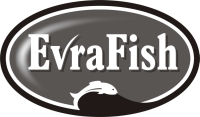CLASS 46
Now in its twelfth year, Class 46 is dedicated to European trade mark law and practice. This weblog is written by a team of enthusiasts who want to spread the word and share their thoughts with others.
Want to receive Class 46 by email?
Click here subscribe for free.
Click here subscribe for free.
Who we all are...
TUESDAY, 11 JANUARY 2011
Poland: some thoughts on the risk of confusion
 The Polish company GRAAL S.A. from Wejherowo applied for the word-figurative trade mark ERAFISH Z-340740 for goods in Classes 29 and 31. The Polish Patent Office refused to grant the right of protection for goods in Class 29. The PPO found that the applied sign is similar to EvraFish CTM no. 4948618 owned by Stek-Rol. GRAAL filed a complaint against this decision.
The Polish company GRAAL S.A. from Wejherowo applied for the word-figurative trade mark ERAFISH Z-340740 for goods in Classes 29 and 31. The Polish Patent Office refused to grant the right of protection for goods in Class 29. The PPO found that the applied sign is similar to EvraFish CTM no. 4948618 owned by Stek-Rol. GRAAL filed a complaint against this decision.
 The Voivodeship Administrative Court in Warsaw in its judgment of 24 September 2010 case file VI SA/Wa 1124/10 dismissed the case. The Court held that the risk of confusion is based on wrong, inaccurate attribution of goods bearing a given trade mark to a right holder by an average consumer. The more distinctive trade mark with the earlier priority is, and the goods or services bearing the marks compared are more similar, the bigger risk of confusion exist. However, when the signs are identical, and the similarity between the goods exists, there is a significant possibility of confusion, or association of both signs, even for professionals. The relationship between a particular product or service and the sign marking it is formed in the minds of buyers.
The Voivodeship Administrative Court in Warsaw in its judgment of 24 September 2010 case file VI SA/Wa 1124/10 dismissed the case. The Court held that the risk of confusion is based on wrong, inaccurate attribution of goods bearing a given trade mark to a right holder by an average consumer. The more distinctive trade mark with the earlier priority is, and the goods or services bearing the marks compared are more similar, the bigger risk of confusion exist. However, when the signs are identical, and the similarity between the goods exists, there is a significant possibility of confusion, or association of both signs, even for professionals. The relationship between a particular product or service and the sign marking it is formed in the minds of buyers.
The Court also noted that the likelihood of misleading consumers as to the origin of products bearing similar trade mark increases with the degree of similarity of the signs. Therefore, the buyer may assume that the owners of such similar signs are in organizational or legal relationship. The existence in the course of trade of a similar trade mark may suggest that the sign is merely a variation of an earlier registered trade mark and comes from the same entity. This was even more dangerous, since both signs are intended to mark the same goods. If the signs are so similar and there are the same goods/services selected, one cannot exclude the confusion among the consumers of those goods because consumers do not always analyze the structure of the mark before selecting the provider of goods or services. This judgment is not final yet. Posted by: Tomasz Rychlicki @ 11.23
Tags: Voivodeship Administrative Court, likelihood of confusion, risk of confusion, similarity of goods, similarity of services, trade mark refusal, trademark law,


 Sharing on Social Media? Use the link below...
Sharing on Social Media? Use the link below...
Perm-A-Link: https://www.marques.org/blogs/class46?XID=BHA2204
Poland: some thoughts on the risk of confusion
The Court also noted that the likelihood of misleading consumers as to the origin of products bearing similar trade mark increases with the degree of similarity of the signs. Therefore, the buyer may assume that the owners of such similar signs are in organizational or legal relationship. The existence in the course of trade of a similar trade mark may suggest that the sign is merely a variation of an earlier registered trade mark and comes from the same entity. This was even more dangerous, since both signs are intended to mark the same goods. If the signs are so similar and there are the same goods/services selected, one cannot exclude the confusion among the consumers of those goods because consumers do not always analyze the structure of the mark before selecting the provider of goods or services. This judgment is not final yet. Posted by: Tomasz Rychlicki @ 11.23
Tags: Voivodeship Administrative Court, likelihood of confusion, risk of confusion, similarity of goods, similarity of services, trade mark refusal, trademark law,


 Sharing on Social Media? Use the link below...
Sharing on Social Media? Use the link below...Perm-A-Link: https://www.marques.org/blogs/class46?XID=BHA2204
Reader Comments: 0
Post a Comment
MARQUES does not guarantee the accuracy of the information in this blog. The views are those of the individual contributors and do not necessarily reflect those of MARQUES. Seek professional advice before action on any information included here.
The Class 46 Archive

